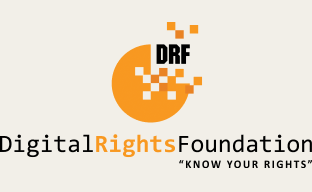In 2019, a reporter from The Bureau of Investigative Journalism in London reached out to Meedan. She needed help with an investigation into airstrikes in Afghanistan, specifically, to document evidence of civilian harm from 21 alleged airstrikes that in recent years had reportedly hit civilian homes and killed family members.
Jess Purkiss and her team knew that using official information from U.S. and Afghan forces would prove near impossible; the Bureau has been tracking strikes in Afghanistan for more than five years and often, both sides of the conflict deny accountability for harm inflicted on innocent citizens.
Turning to the open web, the Bureau first connected with Meedan partner Bellingcat, an open source investigation community well known for its investigations that Meedan supports through our open source verification software, Check.
Purkiss set out to crowdsource information about her list of suspected airstrikes. Were they indeed airstrikes? Who was harmed by them? Where, specifically, did they happen? Whose homes were destroyed? Who survived? Bellingcat’s community of internet sleuths searched the expanses of Twitter, Facebook and other platforms for any evidence that might answer those questions. They logged their findings and built large bodies of evidence for each reported airstrike in Check, where the Bureau could review and verify open source submissions, ask questions and prompt answers.

An image of the investigative workspace in Check
Working together, the team was able to piece together some definitive narratives behind what happened, and to whom, as a result of these airstrikes. In a brief of one incident on the Bureau’s site, the team writes:
"One of the strikes on the Bureau’s list had hit a building – a home – in Baghlan province, north of Kabul, on July 9, 2019. Early narratives around this incident were conflicting. A few brief lines in news reports at the time said that the Afghan Ministry of Defence had admitted civilians had died in a strike, but stopped short of taking responsibility. And while the US denied carrying out strikes in the area, the governor of the province was on camera blaming Nato forces – a common shorthand for the US, the only Nato member still conducting air operations in Afghanistan.
Coordinating an OSINT [Open Source Intelligence] operation involves setting priorities for different strikes – what is known already, and what’s most important to find out? Do we know for sure that a strike happened, or are we trying to pinpoint where and when?
In the Baghlan case, the key information to find was the coordinates. In incidents like this, where responsibility is not clear, finding the exact location of the strike can make a huge difference. In the strike on Masih’s house, it was this detail that had prompted a reversal of the US military’s initial denial."
Using Check to collectively document findings, the team of OSINT volunteers searched the internet to geolocate where the strike happened. One user even found evidence that determined the location of the strike. Others were able to help the Bureau build weights of information that detailed who strikes killed and when.
In total, the Check-supported reporting led to this piece examining two of the incidents and looking at how OSINT can help fill accountability gaps and produce leads to follow up on the ground. Another version of the piece appeared in WIRED.
One strike in particular, in Baghlan province on July 9, outlined the technical process for verification in this Bellingcat case study.
OSINT findings also fed into this long read, examining accountability for the airwar in Afghanistan, which investigated strikes that hit ten civilian compounds. A number of the cases came from the Check account, while others are from investigations outside this project. Work on a Nangarhar strike is featured in an Al Jazeera Fault Lines documentary. The film crew journeyed to meet this family in Afghanistan, and others in partnership with TBIJ.
This case study is an example of how the open source community can use Check to document important information, especially when that information is not accessible due to lack of transparency or resource. On the platform, volunteers from all walks of life, coupled with a rigorous layer of verification by the Bureau, helped shine a light on murky incidents of war that greatly impacted families, homes and livelihoods.
We collaborated with 53 partner organizations worldwide to design and carry out our 2024 elections projects. We extend special gratitude to our lead partners in Brazil, Mexico and Pakistan, whose work we highlight in this essay.



The 2024 elections projects featured in here would not have been possible without the generous support of these funders.




Footnotes
References
Authors
Words by
Megan runs Meedan’s Health Desk initiative as Senior Program Manager. She has worked for news outlets in Canada and the US, and holds a Peabody Award for her work on Netflix’s Patriot Act series. She has a Master of Science from the Columbia Journalism School.







